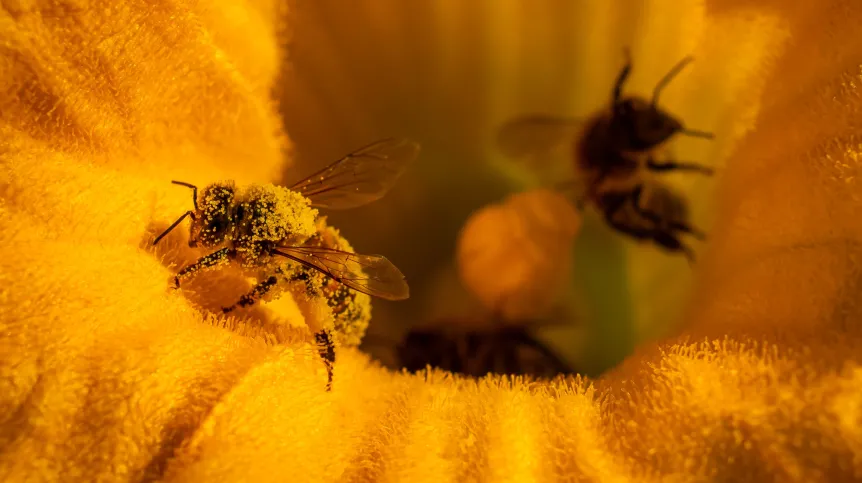
Bees evolved from carnivorous ancestors. In the course of evolution, they had to adapt to a plant-based diet. The problem is that the nectar and pollen that make up their food have such a high of potassium to sodium ratio (K:Na) that it can negatively affect the development and health of bees. Polish researchers analysed the consequences of the situation.
Dr Zuzanna Filipiak (the Institute of Nature Conservation of the Polish Academy of Sciences and the Jagiellonian University), Dr. Michał Filipiak (the Jagiellonian University) and Professor Jeff Ollerton (University of Northampton, UK) explain in their paper in Ecology that animals need more sodium than plants. It is needed, for example, in the operation of the sodium-potassium pump - necessary for the work of nervous system cells, among other things. Potassium, on the other hand, plays a crucial role in plant biology and is present in high concentrations in their tissues and products.
'The K:Na ratio in food was and still is exceptionally important for more than 20,000 species of bees that are currently alive (...) Meanwhile, potassium plays a crucial role in plant biology and is present in high concentrations in their tissues and products. Excessive consumption of potassium may cause health problems and even death for bees,’ say the authors of the study.
When switching from a diet of carnivores (with a much lower potassium to sodium ratio) to a diet of herbivores, the ancestors of bees had to adapt to the changed proportions of these two elements in their new food.
The researchers say: ‘The K:Na ratio can be regulated by living organisms both physiologically and behaviourally, for example by drinking suitable water from pools and puddles or ingesting bodily fluids of living or dead animals', the researchers describe. However, this is only one of the ways to restore the correct proportions of elements in the body. Changing their diet from carnivorous to herbivorous had an impact on the physiology, ecology, nesting strategies and behaviour of the 20,000 bee species that live today.’
Until now, however, scientists did not know the role of balancing the K:Na ratio in the diet in the evolution and functioning of bees, and their interactions with the environment.
Another question is how plants respond to the demand of bees - important pollinators - for pollen containing sodium.
Plants can invest some of the resources they acquire from the soil into the production of pollen and nectar, which is then collected and consumed by bees, while other resources, allocated into leaves and stems, can be eaten by others, like butterflies, moths or beetles. This investment of particular chemical elements into particular tissues is dependent on their interactions with other organisms. Plants can potentially invest the accumulated sodium into certain organs, tissues or products in order to attract or scare off herbivores.
Nectar production is cheap for plants because it consists mainly of water and carbohydrates. Conversely, pollen is expensive, since its cells are made up of a number of chemical elements that are essential for all living organisms. Plants have to acquire these elements from the earth, and some of them can be limited in supply.
This causes an evolutionary dilemma and the related choice, whether to use the acquired resources for pollen production or to allocate them to other necessary life processes. An investment in sodium is less costly for plants because it is common in the environment and plants do not need it in high concentrations.
'The question of whether plants regulate the K:Na ratio in pollen and nectar remains unanswered. Nevertheless, answering it would allow us to better understand the biological mechanisms which form the basis of bee-plant interactions,’ the researchers say.
They add: ‘This knowledge is important for the protection of wild bees. Future research projects should be devoted to analysing the impact of K:Na ratio on the ecology and evolution of bees, which would help us understand their basic needs and relationship to the natural environment.’
The research was financed as part of the joint BiodivERsA 2018-2019 competition under the BiodivERsA3 ERA-Net COFUND programme in cooperation with the Polish National Science Centre (grant no. 2019/31/Z/NZ8/04030).
PAP - Science in Poland
lt/ agt/ kap/
tr. RL













